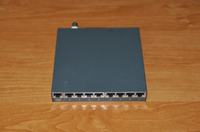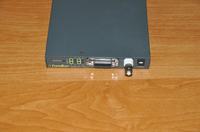Hello, I have a question that bothers me terribly, namely, I would like to play the Internet on the TV cable. Is such a thing even possible?
In theory, this is to be used to watch movies on raspberry. One router that would get the signal after rj45 and put it on the antenna cable, and the other one would convert from the antenna to the rj45. If this is not possible, maybe someone knows a cool router that has good wifi transmission? Client mode only, doesn't need to broadcast wifi, it would be great if it had OpenWrt support.
In theory, this is to be used to watch movies on raspberry. One router that would get the signal after rj45 and put it on the antenna cable, and the other one would convert from the antenna to the rj45. If this is not possible, maybe someone knows a cool router that has good wifi transmission? Client mode only, doesn't need to broadcast wifi, it would be great if it had OpenWrt support.




